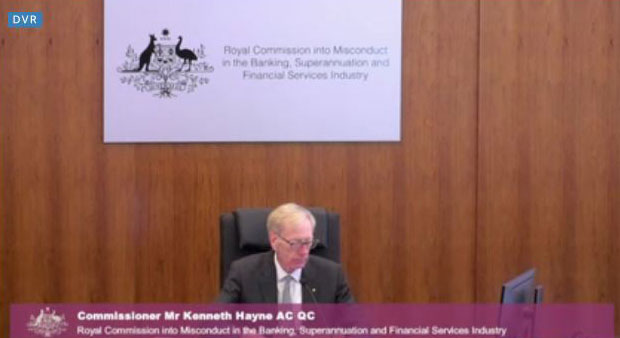During the royal commission’s last two weeks of public hearings into the consumer and home lending space, the banks have regularly pointed the finger at mortgage brokers over such things as trail commissions leading to poor consumer outcomes and poorly verified expenses in customers’ loan applications.
Not only did this look bad for brokers, but it also demonstrated the gaps in bank executives’ knowledge of what their banks have or still do, and forced them to confront how they have— or have failed— to deal with those breaches. Overall, it revealed a major lack of transparency among the banks, which brokers were inevitably linked.
How did banks and brokers fare?
William Lockett, managing director of Specialist Finance Group, said brokers were perceived by the banks as an “easy target” to take the heat and blame off their own conduct, particularly in a forum where brokers had no way of defending themselves.“Given that the banks ultimately have the one and only say when approving any loan application, loan size and purpose of the loan, yet the banks still unfairly attack finance brokers at most given opportunities,” he said.
Tanya Sale, CEO of Outsource Financial, said it was frustrating that the facts about the industry didn’t surface to the top.
“Our industry has just been through two years of working with our regulator ASIC to provide them with all the information and data they required to understand our complex industry. One gets tired of reading and listening to ill-informed critics who clearly have not done their homework and are only looking for sensationalism,” she said.
Martin North, principal at Digital Finance Analytics, a research and consulting firm covering the financial services sector, said the major impact for brokers was that the royal commission highlighted “the inherent conflicts based on the remuneration model”. The commission made a strong case for a fee-for-service model and a switch to the ‘best interest’ legal duty from ‘not unsuitable’, which could significantly alter the current broking landscape.
But North said the banks fared even worse than brokers.
“They were criticised for not providing all the information required by the royal commission, relying on brokers to satisfy their responsible lending obligations, and in some cases ignoring expenditure information, and relying on HEM, a poor substitute for real analysis. As a result, we can certainly conclude that there have been loans written which should not have been written.”
So what now?
Executive director of the FBAAPeter White said brokers need to take careful note of how these matters could play out when the commission formalises its position to government in its interim report, which is expected no later than 30 September.In the meantime, brokers must ensure they are looking after their clients with ongoing support and annual reviews of facilities to ensure these are still appropriate for the client’s circumstances, which is why trail is paid, White said.
Fraud is another issue that needs to be addressed with zero tolerance.
“We must work even harder to see this eradicated from our industry and those minority that do not accurately or fraudulently construct applications need to be, at a minimal level, permanently removed from our industry and the full recourse of the law applied,” he said.
While most headlines focused on the royal commission, two other significant things occurred over the last two weeks, AFG’s CEO David Bailey pointed out.
The ACCC released its interim report revealing the lack of transparency around how the big banks set interest rates on mortgage products and APRA revealed the closure of 100 bank branches over the last 12 months.
Bailey said these matters raise two questions: Without a broker helping their client to navigate the more than 3,800 offerings in the marketplace, how are they expected to get the right product? And if the proprietary channel is an efficient means of origination, why are branches being shut down?
“It is important that any proposed changes to the structure of our industry should not result in an economic drift away from the broker to the lender,” he said.
“Devaluing the service provided by brokers would have significant and long term detrimental effects for consumers by lessening the competitive tensions that currently exist in the credit industry. It is essential that anticompetitive conduct is not permitted to proliferate under the guise of regulatory reform.”







